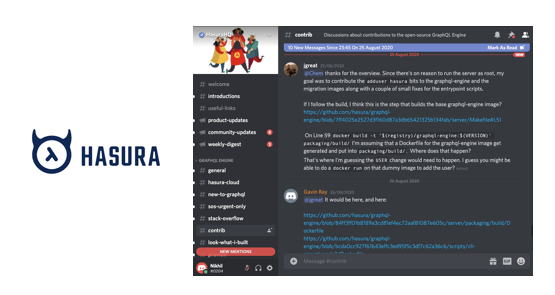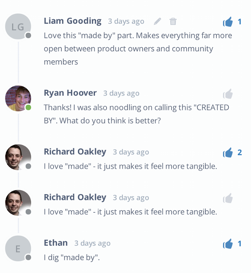Move over Content, it’s time for Community-led Growth
And how companies are leveraging Communities in their business growth during unprecedented times

How our portfolio companies are leveraging Community as their growth strategy during unprecedented times

Community — the condition of sharing or having certain attitudes and interests in common — Oxford dictionary
I’m sure you have all heard about Product-led Growth (PLG) taking over Marketing and Sales-led growth. It’s so engrained a philosophy in the tech community that most of the people can’t even remember a time before PLG.
While PLG is the leading example of product and growth strategy in today’s age it’s not very clear for most people what the right GTM approach is to combine with PLG. As a result, people resort to Content or Paid marketing to get to their market. For the last year or so though, we have been seeing a big underground trend emerge in our portfolio companies — growth coming from building Communities. While very new, Community-led Growth (CLG) has helped these companies accelerate rapidly, especially during COVID, all the while creating formidable moats in the business. It is still Day 1 in this journey, but given that there is very little being written or said about this trend, I thought of writing a few examples and nuances for others to benefit from it.
So what is a Community in the digital sense?
An online community can act as an information system where members can post, comment on discussions, give advice or collaborate — Wikipedia
You might be wondering, yes we have been building and participating in Communities since the age of Social Networks. And aren’t Facebook and Instagram communities in their own rights? Yes and No. What differentiates the communities I am talking about is that they are not just a social network that has people bringing their existing relationships onto the digital platforms and enhancing them.
Instead, a Community is formed out of a group of people helping, advising, collaborating with each other towards a common interest or goal. There are two key aspects to this:
1. An urge to contribute to the community
2. The perception of benefitting from the community

As you can see, a community differs from a network with the common goal or interest that brings it together. As an entrepreneur, it’s your job to align the goals of this community with the goals of your business.
A true community is characterised by High Engagement, Members acting as Leaders, and light-touch Moderation. These communities are organic, brought together by the sponsor, but then left to flower on their own with minimal supervision and sustenance required. Here are some examples of companies who are leveraging their communities as they grow.

Why are Communities so important?
While following Product-led Growth helps you build the right product for your customer, it doesn’t help you distribute and reach your customer. We have seen many companies struggle to scale while having a good product that works for a niche of customers. This is where CLG comes in.

There are a few main functions where your Community comes handy as you build your business:
1. Acquisition (Marketing)
The community’s growth is a natural addition to your top-of-the-funnel (TOFU). It’s a 0 CAC, organic channel that you create, naturally evolving over the life of the community.
Our portfolio company Raena leverages its community of personal-care and beauty sellers for its organic growth.

From the start of this year the team adopted a community-led growth strategy. The result is very clear. While most companies are struggling to maintain their numbers during COVID, Raena has seen an astounding growth (30%+ m-o-m) with no marketing costs. As you can see in their growth chart, this has come in step with their community member growth. The company is now profitable and on a very solid path to success.
2. Retention (Customer Success)
The community also plays a big role in supporting each other and reducing the reliance on customer support or success functions to onboard, prove value and retain your customers.
Our portfolio company Hasura has been using it’s Discord community for ages to help onboard, guide, and ramp-up users on its products.

Most, if not all, customers come from this Discord community and has led to eye-popping ARR growth for the company on the back of expansions. Best part, companies are already users of the product even before they become customers, thanks to the Community educating them on product and onboarding.
3. Feedback (Product)
Probably the most under-rated aspect of a community is their ability to provide direct feedback, at scale, straight to the company or its leaders. As an organisation grows, it becomes harder for Product teams to have an ear on the ground. The CLG engine should feed directly into your PLG engine.

Product companies have for the longest time sought direct feedback from their users in the community. It’s likely the most natural way of building your product. For example, see how Ryan Hoover from Product Hunt made product decisions by asking the community.
4. Business Moat
Besides all of this Community naturally creates a moat for your business. In fact, one can argue that a big reason behind the acquisition of Github and ProductHunt was the large scale and engaged Community they had managed to build.
How to build this Community in your Company?
Now that you might start believing in the power of a Community of your users/customers, a natural question would be “How do I replicate this?”
Expect a separate post on this topic, but while we are at it, there are numerous tools and platforms you can start leveraging on to initiate this Community journey in your own company.
Platforms such as Meetup, Slack, Discord, Commsor, HeySummit, Icebreaker.video are all great places to start.
Start small, have the right intentions, and grow…
On a side note, we are very excited about tools and platforms being built to manage such communities, be it a dev-community or generic. If you are building something in this space, do reach out to us! You can ping me on LinkedIn or Twitter.
Want me to write about tips on building a community from our portfolio companies? Shout out below!
